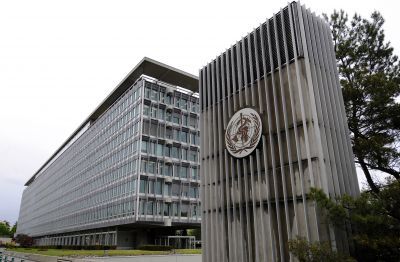Under fire, WHO wins praise from flu scientists - Analysis

Your support helps us to tell the story
From reproductive rights to climate change to Big Tech, The Independent is on the ground when the story is developing. Whether it's investigating the financials of Elon Musk's pro-Trump PAC or producing our latest documentary, 'The A Word', which shines a light on the American women fighting for reproductive rights, we know how important it is to parse out the facts from the messaging.
At such a critical moment in US history, we need reporters on the ground. Your donation allows us to keep sending journalists to speak to both sides of the story.
The Independent is trusted by Americans across the entire political spectrum. And unlike many other quality news outlets, we choose not to lock Americans out of our reporting and analysis with paywalls. We believe quality journalism should be available to everyone, paid for by those who can afford it.
Your support makes all the difference.The WHO has been accused of inflating the threat posed by swine flu, but many experts commend the UN health agency for caution and warn that what is a minor peril today may still rebound in more vicious form.
After mulling the state of the emergency it declared last June, the World Health Organisation (WHO) decided on Wednesday it was still too early to say the global pandemic had peaked.
That decree may chafe critics who have blasted the WHO for classifying as a pandemic - the highest level of threat - an outbreak that proved even less lethal than regular flu.
So far, the new H1N1 strain has killed around 16,000 people, and infected tens and possibly hundreds of millions, according to the WHO.
By comparison, ordinary "seasonal" influenza claims about half a million lives each year, while the 20th century's three flu pandemics killed between between one or two million people each in 1957 and 1968, and maybe 50 million in 1918-1919.
Criticism has also focused on the billions spent on vaccine, cranked out at top speed by major pharmaceutical manufactuers, to inoculate entire populations.
Many orders have since been cancelled and vaccination rates have been relatively low. In a world population of 6.7 billion, around 200 million people worldwide have gotten the H1N1 jab, according to UN estimates.
"We have to draw lessons from the crisis so that we don't repeat our mistakes," said Marc Gentilini, former head of the French Red Cross and an expert on infectious disease.
Citing the French case, he told AFP that the attempt to administer a blanket vaccination was "logistically too cumbersome, grotesque and unrealistic."
But most experts argue that the UN body took the right course of action.
"The WHO acted appropriately at the time and with the information they had available. The rate of spread of the virus was phenomenal," said Nigel Dimmock, a virologist and emeritus professor at Warwick University in Britain.
Christophe Fraser, an epidemiologist at Imperial College London who participated in several key swine flu studies, said the process "was entirely appropriate."
"I don't think we had the kind of information that would have told us this was a very mild virus and was going to stay a very mild virus," he said.
Mark Miller, a top epidemiologist at the US National Institutes of Health, agreed that the "uncertainty of a potential catastrophic public health emergency" left little choice but to develop a new vaccine and quickly scale up production.
Several specialists cautioned that it is still early days, and a re-emergent H1N1 strain could be extremely nasty.
"Everyone thinks this is a post-mortem, but unfortunately this virus is not dead yet. It is on a trajectory, and we don't know where it is going to end up," said John Oxford, a virologist and professor at the Queen Mary's School of Medicine and Dentistry.
The new strain is a "Darwinian super virus" that has quickly pushed other strains to the sideline, as as happened in previous pandemics, Oxford said.
He also observed that the new bug was still mutating. "In the past, more often than not, the first wave has been overshadowed by the second and third waves," he said by phone.
Lone Simonsen, an epidemiologist at George Washington University, points out that about 70 percent of the fatalities from the 1968 pandemic occurred in the second year.
She and others also cautioned that older persons less affected by the new strain - perhaps due to a partial immunity lingering from exposure to the pre-1957 flu, also an H1N1 variant - might become more vulnerable.
While they defend the WHO, experts agree that some changes are needed in the pandemic alert and management system.
"Perhaps they could improve public perception in the future by having pandemic scientific advisors who have no conflict of interest" with pharmaceutical companies, said Simonsen.
Several called for adding some measure of virulence to the threshold definition of pandemic, though they point out that it is difficult to assess lethality in the early stages of an outbreak.
Others say that far more research is needed into the link between animal and human diseases.
"There's a huge gap between human and veterinary virology," said Oxford, noting that the swine flu went unnoticed for more than a decade while still in pigs.
"This is a huge problem for us," said Fraser. "The surveillance of influenza in pigs is terrible - its a scandal."
mh/ri/rom
Join our commenting forum
Join thought-provoking conversations, follow other Independent readers and see their replies
Comments